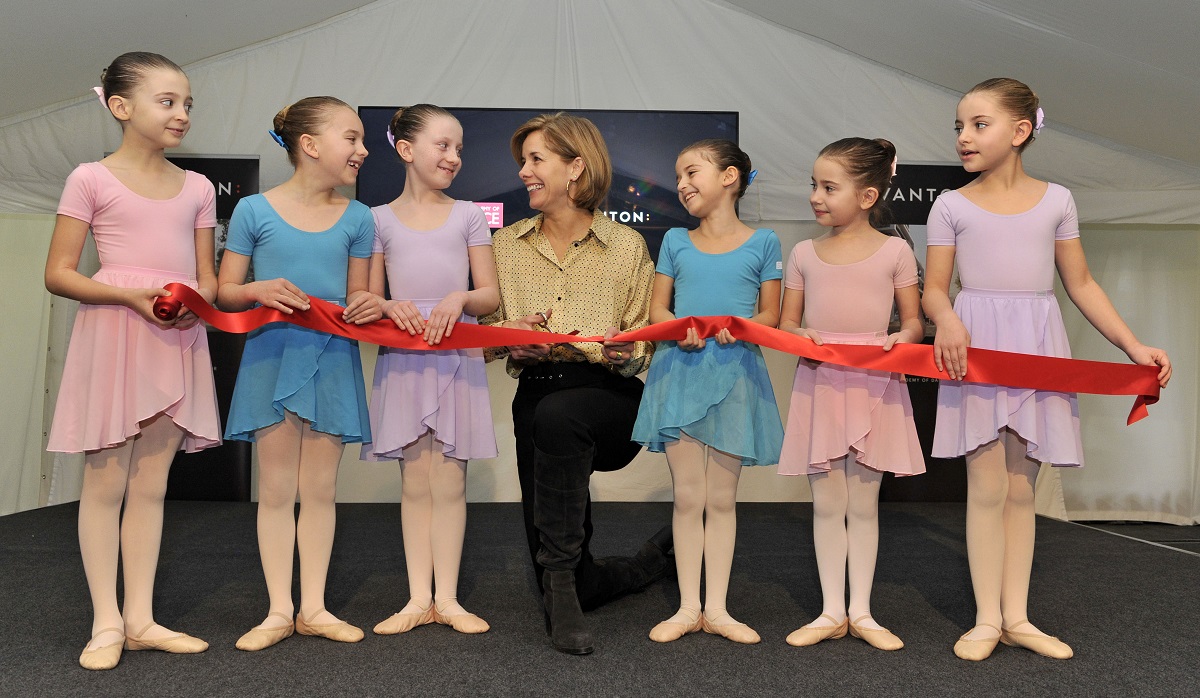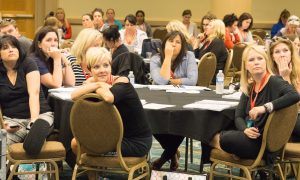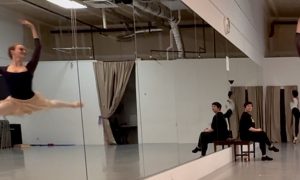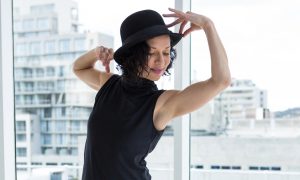The Royal Academy of Dance (RAD) is one of the largest and most influential dance education and training organizations in the world. Established in the UK in 1920, the RAD encourages its teachers to perfect their teaching skills and pass on this knowledge to their students.
Next year will be the RAD’s 100th anniversary, and the renowned organization is showing no signs of slowing down. In fact, the RAD is continuously malleable – recognizing where the dance world is, what the trends are, what students are interested in and what teachers are finding in their practice. But it still holds true to classical ballet technique and what it takes to be a professional dancer, especially these days.
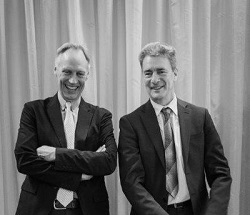
Luke Rittner, Chief Executive, and Gerard Charles, Artistic Director of the Royal Academy of Dance.
“A hundred years is a long time,” RAD Chief Executive Luke Rittner says. “It’s a great achievement. I think back about some of the great pioneers of the organization and what it was, how far it’s come in that hundred years, from incredibly small beginnings. It’s a great moment for celebration, but there’s also an opportunity for some reflection.”
Leading up to the RAD’s centenary, Gerard Charles was appointed Artistic Director of the organization this past October 2018. Charles, who was the Director of Artistic Operations at Joffrey Ballet in Chicago, will now be responsible for providing artistic leadership, creativity and expertise to all areas of the RAD’s work.
“The reason we exist is to create good dance,” Charles says of the RAD. “If we’re teaching teachers, how we teach the teachers affects how those teachers teach children later on. And how those children are taught will affect how they become older students.”
Charles adds, “When you go back to the origins of the RAD, it was five different nationalities of teachers who got together to create this best solution they could at the time. And they certainly did a lot, and it’s grown. The world of dance has changed even before I got my first job to today. Ballet is still ballet; good technique is still technique, but a ballet company is not just doing Swan Lake and The Sleeping Beauty anymore. We’re looking not only to what ballet is today but what ballet could be in 25 years. I think we always have to be aware that life moves on around us, children’s interests change, children’s attention spans change. With our teachers constantly being in the studio with young people, they are a great source of research for us. Like, what’s happening now? If they can feed that back to us, it’s a living animal.”
The exact centenary events and programs will be announced the week of May 18 (also the birthday of Margot Fonteyn, who was the RAD president for 36 years), but Rittner proudly reveals that the RAD is “within a spitting distance of a quarter million of young people taking our exams a year. We’re about 247,000 this year, so our objective is quarter of a million in our centenary year. And that’s in 85 different countries!”
And while the organization is nearly a century old and rooted in the ballet art form, over the past few years, the RAD has started certain programs that address more current trends and unite community, like Project B, an initiative that aims to create community between male dancers and encourages boys to take up ballet, and Silver Swans, a teacher training program geared toward instructing the growing older market of 55 years and above.
Recently, the RAD announced that, for the first time, it is going to become the validating body for a street dance syllabus.
“We are the Royal Academy of Dance; we’re not the Royal Academy of Ballet,” Rittner points out. “Ballet will always be at the heart of the Academy, and hugely important, but it mustn’t be a constraint. It’s the starting point; it’s not the only point. I’ll make a prediction. I would think that within the next five to 10 years, the Academy might well have two or three other syllabi.”
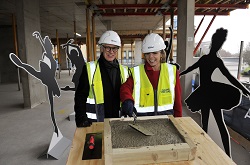
Luke Rittner, Chief Executive and Dame Darcey Bussell, President, laying foundation at the new RAD Headquarters. Photo by Adrian Brooks/Imagewise.
Having lived in the US for 40 years, new Artistic Director Charles plans to grow the RAD’s presence in the States and Canada, as more and more dance educators recognize its high standards and quality training methods.
“Early training is very important to me,” says Charles. “I think that whereas there are some excellent teachers who aren’t affiliated with any particular organization or style, there’s a whole bunch of the teachers who are not producing the results that they should. Parents are putting money out and they’re not guaranteed any particularly good return except they get to see their child on stage every six months. For a vast number of children and their parents, maybe that’s all they want, but, in any of those situations, there are students who are going to be more serious and they deserve to have good teaching.”
Charles explains that the heart of the RAD is solid teaching and tried and true safe, training methods, not just examinations.
“I think an organization and recognition of the standard of the teacher is very, very important. The Royal Academy of Dance has got in them 99 years of tradition of trying to assure good teaching. I think some people often talk about us being an examination body or just a syllabus, but really, it’s about the quality of the teaching that’s important. The examination is a nice benchmark and I think in a test orientated world, maybe some parents don’t want to have another exam for their child to take. But I do really think that the structure of the classes and the quality of the child age appropriateness is so important. We can get a young body to do all sorts of things, but what does that do to that child’s body or what about mental preparedness? We’re in an art form where we’re building a dancer to be expressive so we can communicate, so it’s not just about doing a trick.”
In celebration of the centenary next year, the RAD is also in the midst of building a new headquarters in London, one that is almost double the size of its current premises, and with better facilities, a performance space, studios, library and archive. The RAD is set to move in 2020.
“It’s really about how to be more a part of the community as a whole,” Charles shares. “It would be great to have more of the professionals entering the building, so that the younger dancers who are training can see. We have a performance space now – won’t it be great to have different things going on there! And not just dance. There, you can have photographic exhibits or bands playing, so I think you can really activate a place and make it a living place. It can be a new building, but it’s the people in it who make it alive.”
For more information on the Royal Academy of Dance and its centenary events and programs, visit www.royalacademyofdance.org.
By Laura Di Orio and Deborah Searle of Dance Informa.


